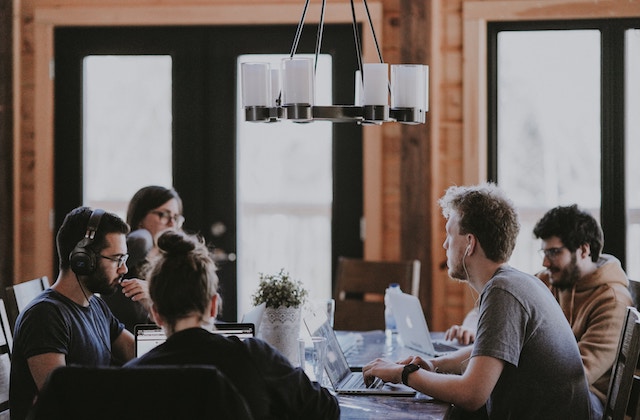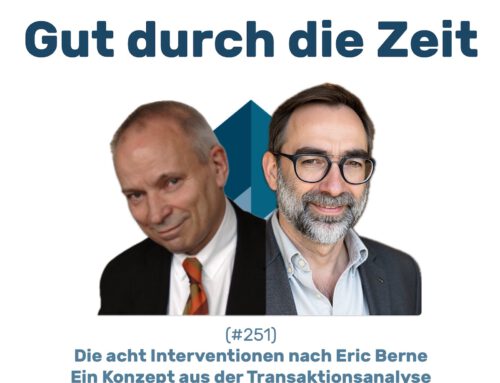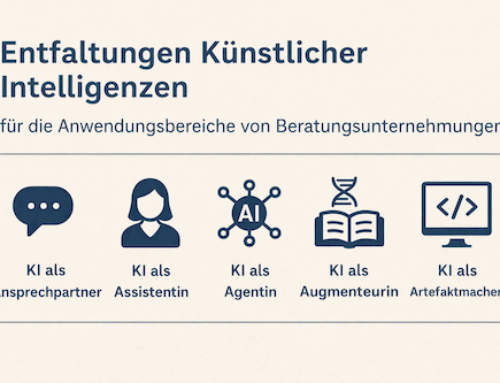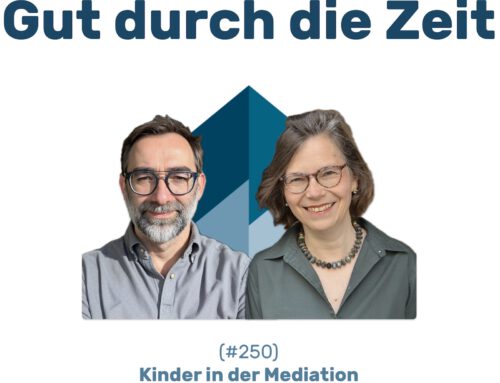10+1 commandments for moderation
Modernity Business moderation for meetings and strategy meetings
As soon as people work together in teams, there is a need for agreements, discursive exchange, but also for getting to know each other through dialogue and - for quite a few - desirable democratic decision-making processes.
All of this requires discussions in groups – and therefore moderation skills on the part of the manager or an internal or external moderator.
In the following, I will note down a few experiences from our work in strategic dialogues and other consulting and moderation processes and put them up for discussion.
Firstly, ten empirical values are formulated as commandments that have proven to be fundamental in our work. This will be followed by prohibitions, recommendations and considerations.
Blog post series on moderation
Let's go - 10 commandments for moderation.
1. be prepared as a moderator – with a buffer!
Moderation requires preparation. The moderator needs an idea of what the working group is concerned with, what it wants to decide or at least discuss. Or is it about a dialogue that should bring out the diversity of the participants?
In short, the moderator should have clarified a few key questions beforehand:
- Why is this meeting taking place?
- Who must be present for the content to be discussed and decided?
- Which communication rounds are likely to come up?
- What time investment is appropriate?
Keep a buffer, never plan too tightly, rather with room to manoeuvre. It is a bad habit of our time to exaggerate efficiency.
Read our blog post "Coffin Corner" on the seductive exaggeration of efficiency
2. create a concise agenda!
The result of good preparation is a concise, clear agenda. The agenda must convey confidence for you as the moderator, but also for everyone involved; it must be clearly visible: This can be done; let's get started and fulfil our plan!
3. make sure you are prepared!
Are you prepared? Then make sure that the participants are also prepared so that they can make their contribution. All relevant documents and information must be distributed before the meeting. In good time.
A discussion, a meeting, a group discussion is rarely an information round. It is more of a presentation, i.e. a stage performance by a person with an audience. Don't let the boundaries to a meeting become blurred! For a meeting and a group discussion, all participants should have enough time in advance to receive and process the relevant information that needs to be processed for the topic points.
4. work with the agenda!
Agenda does not come first and foremost from agents who do not want to be recognised. You can make the agenda visible to everyone. Agenda comes from the Latin agerethe root of acting. So act with the agenda! Work with it, show it to everyone so that everyone in the room always has it in mind and can orientate themselves by it. It embodies confidence and represents the starting point for tangible cooperation. To hang it up a little higher.
But what does that mean in concrete terms? The following; in principle, every participant must always have the agenda in view and therefore be aware of it, what about it goes straight and How much time is still available. It can be supplemented by the To-dos and the Decisions (who-what-to-when-with-whom)each of which is linked to a specific topic. In this way, the agenda also becomes a decision-making protocol.
5. always make sure that everyone knows what is being worked on!
I would like to reiterate this explicitly here. As a moderator or leader, visualise every meeting. Visualisation helps everyone listening to understand more. That's why visualisation is not an end in itself, but a mental support to ensure that you don't lose sight of the "big picture".
With a visualised agenda, moderation ensures that everyone present - at least individually – has the opportunity to have an answer to key questions ready:
- What am I and the others doing here right now?
- Why does it take so long without getting me anywhere mentally?
- When will this come to a good end?
6. make sure you have contributors!
A meeting or any other discussion of people who want to work together on a project and create something requires their contributions – and not just those present.
As a moderator, you should always follow the principle that every participant becomes a contributor. The following ideas are helpful for this:
- Was each participant able to prepare?
- Can each individual contribute to the success of the meeting?
- Can each individual generate added value for themselves?
- Does every single person in the room know what the expectations are, what the common theme is and what the goal is?
Or in short: No meeting needs attendees, but all contributors do!
7 Ensure clarity of the processing setting and the communication rounds!
Group members not only need clarity about the topic, but also about the way in which the topic is dealt with. The How concerns on the one hand the Setting of the working groupon the other hand the Type of "communication round".
This is ultimately decided by the moderator – in consultation with the meeting participants.
The meeting can take place as a whole plenary session or individual topics can be prepared in small groups first. The setting can be standing or – as usual – seated. There can be a large conference table in the centre or nothing, with a circle of chairs around it. Many things are conceivable here and few things are tried out everywhere. But sometimes there are good experiences with the unusual in some places… Look for them!
In addition to these methodological questions of the setting, in our experience it is also crucial that the form of communication is not chosen transparently or decisively enough.
Which Form of communication ("communication rounds") exist in principle:
- Information rounds,
- Dialogue rounds,
- Discussion rounds,
- Decision rounds and
- Conflict resolution rounds.
One detailed blog post on communication rounds can be found here.
8. many small, structuring breaks!
All experience shows: There is too little pausing and inner distancing. A second experience I have had in working with groups fits in with this: Everyone thinks (in groups?!) that they take too many and too long breaks. I assume – but that's a hypothesis - many believe that they don't work during the break. In fact, however, it is particularly important for good, creative work to allow for alternating inner distances in order to gain different perspectives on the problem.
I'm sorry to say that although I agree in principle with many deceleration enthusiasts in terms of the reasons and motivation for taking a break, I also have to overtake them: Slowing down is by no means only important because it is "good for being human" and everyone needs to let go of work from time to time. No, deceleration and distance are important and necessary for work itself, which is why it is in the service of work and efficiency, but above all of quality and sustainability. It falls short if we see slowing down merely as a health measure and precaution rather than a creative act.
However, breaks not only increase work and meeting efficiency at this level, but also allow you to check your e-mail and tech messages, make short phone calls and jot down important thoughts that have nothing to do with the topic at hand.
Anything else concrete?
- Take a 15-20 minute break after 1.5 hours at the latest;
- Even after 30 minutes, a break is possible and refreshing if the agenda and communication rounds allow it. Don't be afraid to take more breaks than usual
- Introduce clear break structures that are adhered to by everyone. (This may take some time and several attempts, but don't give up. This is where moderation must take a strict lead).
9. listeners to power!
There is no reason to assume that performance is loud. After all, we are not cars. From a moderation perspective, the quiet ones tend to be the important ones because they are in danger of being "drowned out".
But there are also good biological reasons for shifting attention preferences in group conversations: We have been endowed with only one mouth, but two ears. That shows where the preference lies! We hear in stereo and always hear several variants and perspectives simultaneously in the audio, which we combine to form a coherent overall picture. This is not possible when speaking. Linguistically, we always have to describe and present different perspectives on an event in time, i.e. one after the other.
For the moderator, this means that concentration and attention should be focussed on the quiet ones, not the loud ones. Pay attention to participants who are not saying anything. Include these opinions in the group discussion. Use different approaches and question types for this!
- Open questions: What do you think? What information should the others take from your silence?
- Hypothetical questions: If you were to disagree here, what would be your primary argument?
- Wishes: I would like to hear from [Theodor] what he thinks about this?
- Circular questions: What concerns do you think have not yet been addressed by the others because you are promoting the other side too much? (Attention: Group culture! Must be connectable.)
Tip if asking loud questions would not be constructive for the moderation: The five-minute card query helps effectively against "the loudest argument wins".
10. to-do list:
Note down results. Decisions are documented and agreed actions are put on a to-do list with a deadline. Nobody needs progress reports themselves. Or when was the last time you read something in a log? (The most common reason for this is to collect evidence and thus arguments in a conflict. People overlook the fact that this approach not only leads to clarity on one side, but also to escalation in the conflict system. In this case, work on resolving the conflict rather than escalating it).
10 + 1 Never close the dialogue process without feedback
Never end a conversation without (briefly) opening the discussion room for feedback, evaluating the communication process and organising feedback for all contributors. Open up the time-space and ask about the HOW of the joint work from just now! Slow down and encourage yourself to take the next steps!





Leave A Comment